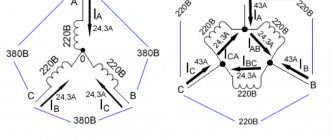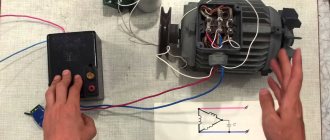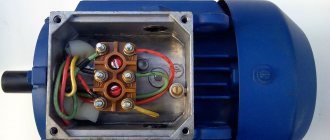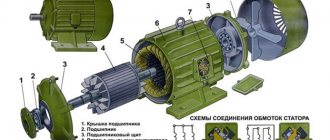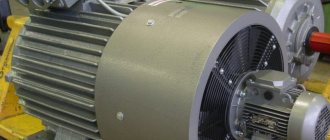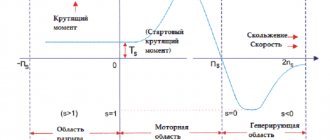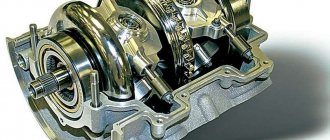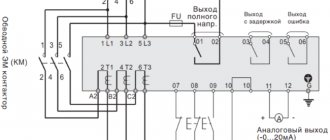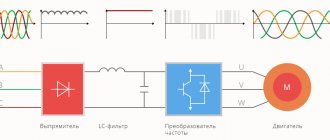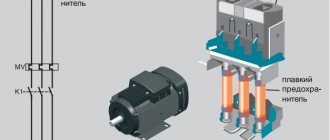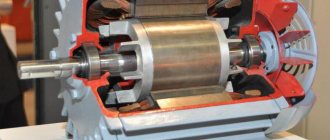In construction, power tools are an indispensable assistant. It is used for drilling holes, driving nails, etc. All power tools are equipped with special brushes, the purpose of which is to transmit electric current. Removing voltage from the stator, the brushes supply it to the rotor/armature commutator, which is required to create rotation. Thus, brushes are used as a current supply and at the same time have the necessary properties to withstand mechanical loads during armature rotation.
They are usually made from coal or graphite. Various admixtures can be added to the base material to ensure that the product meets certain standards. For example, there are carbon brushes made of materials that reduce sparking during operation. But, basically, the main goal of manufacturers is to increase the service life. To ensure longer brush life, do not put too high a load on the power tool. Types of parts include:
- Carbon brushes;
- Copper-plated;
- Carbon-graphite;
- Copper-coal;
- Graphite;
- Copper-graphite.
Graphite brushes
A wide selection of brushes for power tools does not guarantee their high quality. It is difficult for a non-specialist to identify a fake due to many different nuances. Therefore, it is better to purchase such parts from authorized dealers and have them replaced at the appropriate service centers. This will guarantee a high-quality installation by checking the general condition of the tool and its brush assembly.
Carbon brushes
When to replace motor brushes
Dust particles getting between the carbon brushes and the formation of a spark, combined with the rotation of the engine rotor, leads to their natural wear. This is expressed in a simple change in shape in the form of erased contacts and linear dimensions of the element. As a result of wear, the operation of the electric motor, and as a consequence of the entire washing unit, is disrupted. You can determine brush wear by the following signs:
- noise and crackling noises are emitted from the motor installation location during operation, caused by direct contact of the pressure spring to the rotor commutator;
- insufficient power of the electric motor when the laundry remains wet even at high speeds during spinning;
- sudden stop of washing;
- the appearance of smoke, sparking and a specific burning smell;
- displaying an error code (typical engine malfunction).
In recent years, more and more models of washing machines are equipped with self-diagnosis systems, which allow, without interfering with operation or disassembly, to determine most of the reasons why certain working units fail.
The error codes that appear on the displays of washing machines are different for all manufacturers and are indicated in the technical documentation. For example, for German Bosch washing machines, the designation E or F21 means a problem with the motor, but not always with the brushes. No matter how “smart” the washing machine is, the actual condition of the brushes and commutator can only be determined visually, and this cannot be done without disassembling and removing the engine.
Pros and cons of brushed motor
So we briefly figured out the structure of the brush motor. Now what are its pros and cons?
pros
- The first advantage of tools with brushed motors is their lower cost
compared to brushless ones. This is due to production technologies and more affordable materials. - The second advantage, experts note the simplified design of the engine
, which affects
the cost of repairs
. It is easier to change the brushes than the entire motor as a whole. - Another advantage is the relatively low weight
and
size
of the instruments.
Minuses
- At high speeds, brush friction increases. This leads to the problem of their rapid wear
.
In addition to the wear and tear of the brushes themselves, they are worn out during operation. Erased graphite can clog the collector
and render the instrument completely unusable. - Also, the disadvantages include the lower power
of brushed tools, in contrast to brushless models. This is because brushed motors physically cannot produce power above 3,000 rpm. But this power is quite enough for household use. - Another disadvantage of brushed motors is the presence of sparking
during work. Please note that when starting the tool, the brushes rub against the commutator and create visible sparks. This means that you need to work with brush tools more carefully - remove all possible flammable substances and objects away from you, and also take periodic breaks from working to avoid overheating of the engine. - The last disadvantage is the not very high efficiency
of tools with a commutator motor - only 60%. This means that the tools are slightly less capable of cutting through tougher materials (such as metal) and do less work in the same amount of time as a brushless tool.
Recommendations for selection
When selecting brushes, first of all you should pay attention to the material for their manufacture: good electrical conductivity and the strength (hardness) of the product itself, which affects its durability, are important here. One of the important characteristics of parts is active resistance, which is taken into account when calculating data on the motor winding and the rating of ballasts
Carbon brushes fully meet these requirements. The carbon material has an additional advantage: when a voltage arc appears, welding to metal surfaces does not occur (when the engine is running, an electric arc occurs quite often).
Many branded carbon brushes are equipped with an automatic shut-off mechanism: a special spring with a non-conductive tip made of ceramic is installed in the part. Having reached a certain level of wear, the spring pushes out the tip and the power tool turns off. When worn out, without this mechanism, the brush holder spring or brush drive may affect the commutator, leading to armature breakage (it is recommended to analyze the condition of the brush assembly and the brushes themselves from time to time).
Generator brushes have the shortest service life. Such parts, in addition to their own wear and tear, also negatively affect the operation of the engine. These products are made from almost pure copper, with a slight addition of coal components, graphite and other impurities. These parts are designed for a current value corresponding to the value in the generators (significantly greater than that of the engine). You cannot put them in power tools: such actions can immediately cause a short circuit. If the armature has time to work, then the high voltage and elevated temperature will damage the winding, which will require expensive repairs.
Important! Armature commutator copper can be hard or soft. For soft copper you need to choose special soft brushes
If rigid products are installed in this case, the collector may completely wear out in a short period of time, and repairs to replace the armature will be required. When installing soft parts on a hard commutator, the brushes themselves will fail.
In professional equipment, the brushes turn off automatically
Generator copper-graphite brushes are not the safest option for power tool motors. The movement of charged particles in generators is much more intense, and the brush assembly is not designed for low values. The use of such elements is fraught with damage to the windings. Complete failure occurs due to excessively high temperatures and current. When choosing spare parts, it is important to remember: professional tools with the highest power ratings use self-switching elements. If you install others, the equipment will malfunction.
It happens that graphite copper brushes are ordered for devices with additional contacts. In this case, only branded elements that actually correspond to the technical parameters of the inventory will be required. Such spare parts are characterized by a long period of use and higher resistance to temperature influences. That is why up to 45% of Ukrainians turn to official dealers for consumables for Bosh power tools.
Manufacturing process
Component composition
The specific composition of the brush depends on the application. Typically graphite/carbon powder is used. For greater electrical conductivity, copper is used (rarely for AC use). To maximize electrical conductivity and tensile strength, highly dendritic (electrolytic) copper powder is used. Binders, mainly phenol or other resins or pitch, are mixed so that the powder retains its shape when compacted. Additives can also include metal powders and solid lubricants such as MoS2 and WS2. A lot of research and development is required to determine the brush composition for each application or engine.
Consolidation of the mixture
Types of commutator brushes
The brush components are compacted in a mechanism consisting of an upper and lower punch and a die using mechanical or hydraulic presses. At this stage, depending on the subsequent processing, the copper wire (so-called shunt wire
) can be automatically inserted through the hole in the upper punch and fixed in the pressed brush block with powder pressed around. This operation, called "tamping", is usually performed using electrolytic copper powder; Silver plating may be used in some high-performance applications. After this process, the brush is still very fragile and in professional jargon is called a “green brush”.
Firing wet brushes
Brushes on an electric motor removed from a vacuum cleaner
Then the “raw brushes” are heat treated in an artificial atmosphere (usually hydrogen and nitrogen) at temperatures up to 1200 °C. This process is called sintering or baking. During sintering, the binders either burn out or carbonize and form a crystalline structure between carbon, copper and other components. Baking is accompanied by graphitization (heat treatment). The heat treatment varies according to a temperature curve precisely defined for each material mixture. After the composition of the mixture, the temperature curve used is the second big “secret” of every brush manufacturer. After heat treatment, the structure of the brush changes in such a way that it is almost impossible for competing companies to copy it.
Additional operations
Brushes in a small commutated DC motor
Sintering causes the brushes to shrink and bend. Grinding is necessary to give them their final shape. Some manufacturers, in order to make the brush more durable, use additional processing - impregnation of the working surface with special oils, resins and lubricants.
The production of carbon brushes requires in-depth knowledge of materials and experience in working with mixture compositions. Minor changes in the composition of the brush, just a few percent by weight of the components, can significantly change its properties during use. There are only a few brush companies in the world, which mainly specialize in certain types of brushes.
Carbon brushes are one of the least expensive parts in an electric motor. On the other hand, they are usually a key part that ensures the durability (“life”) and performance of the engine in which they are used. Their manufacture requires close attention to quality control and production process at all stages of production.
Great Encyclopedia of Oil and Gas
Page 1
Carbon-graphite brushes are made from graphite with the introduction of other carbon materials (coke, soot) and binders. These brushes have increased mechanical strength, hardness and low wear during operation. [2]
| A brush on the slip ring of an electric machine. [3] |
Carbon-graphite brushes are made from graphite with the introduction of other carbon materials (coke, soot) and binders. Carbon-graphite brushes have increased mechanical strength, hardness and low wear during operation. [4]
| A brush on the slip ring of an electric machine. [5] |
Carbon-graphite brushes are made from graphite with the introduction of other carbon materials (coke, soot) and binders. Carbon-graphite brushes have increased mechanical strength, hardness and low wear during operation. [6]
Carbon-graphite brushes (grades G20, G21, G22) are made from graphite with the addition of coke, soot and binders and, after heat treatment, are coated with a thin layer of copper. They are designed for a nominal current density from 10 to 22 A/cm2, have increased mechanical strength, hardness and high wear resistance. [7]
Carbon-graphite brushes are made from a mixture of coke, carbon black, small amounts of graphite and binders. The technological process of their production ends with the firing operation. Graphite brushes are mainly composed of natural graphite and binder materials, and their production process also ends with a firing operation.
Electrographitized brushes differ from previous ones in that they undergo an additional heat treatment operation in special electric furnaces at a temperature of about 2500 C.
Metal-graphite brushes consist of metal powders, graphite and binders, and when the copper content is 90%, binders are not used. [8]
Carbon-graphite brushes are used for commutator machines with a power above 200 kW at a voltage of up to 1000 V and a quiet load, graphite brushes for commutator machines with a power of up to 10 kW at a voltage of up to 500 V and a quiet load, electrographite brushes are used for commutator machines of medium and high power at voltages up to 1000 V for medium and difficult switching conditions, copper-graphite brushes - for low-voltage DC generators with voltages up to 48 V and for slip rings of AC machines. [9]
Carbon-graphite brushes are used for commutator machines with a power above 200 kW at voltages up to 1000 V and a quiet load, graphite brushes are used for commutator machines with a power of up to 10 kW at voltages up to 500 s and a quiet load, electrographite brushes are used for commutator machines of medium and high power at voltages up to 1000 V for medium and difficult switching conditions, copper-graphite brushes - for low-voltage DC generators with voltages up to 48 V and for slip rings of AC machines. [10]
We disassemble the washing machine
To replace the brushes of the electric motor of the washing machine, you need to prepare for the upcoming work by studying the instructions and the layout of the main components. All operations must be carried out with the utmost care. When disassembling, try to remember well the location and method of fastening the affected components.
Expert advice! It will be useful for a beginner to take a photograph of the internal structure of the opened machine in order to know exactly what and where should be after assembly.
Required Tools
To get to the motor and replace the brushes, you will need:
- Screwdriver Set;
- spanners;
- pliers;
- sandpaper.
Preliminary disassembly
All repair work on household electrical equipment must be carried out when it is completely disconnected from the network. First, remove the plug from the outlet. In preparation for replacing brushes you will need:
- disconnect the automatic machine from the supply and sewer water pipes;
- unfold the unit in order to achieve convenient access to its rear side;
- remove the back cover, which is usually secured with self-tapping screws;
- dismantle the belt connecting the electric motor to the drum shaft for loading laundry, which will require pulling it towards you while carefully rotating the pulley;
- disconnect the motor from the power circuit by opening the corresponding connector;
- Unscrew the bolts securing the engine to the frame and remove it.
Need to know. Models from different companies may have their own design features. That's why you studied the manufacturer's instructions before starting work.
Collector motor diagram
Replacing brushes on a washing machine
It is better to carry out work with a dismantled engine on a table in conditions of sufficient lighting. The procedure for replacing brushes is as follows:
- place the motor on its side to gain easy access to the brush installation location;
- unscrew the mounting bolts;
- remove the brush from the socket, remembering the direction of sharpening the tip;
- repeat the above operations with another brush;
- inspect the rods (if there are no visible damages and the length of the graphite exceeds 1.5 cm, then the reason for the failure is not them);
- check the condition of the engine manifold by sanding all irregularities;
- install new brushes, securing them in the desired position with standard bolts.
Do not forget! The bevel of the brushes should provide the maximum area of their contact with the commutator. If this is not the case, you need to rotate them 180 degrees.
Shutdown
Reinstalling the engine is done in reverse order. To do this you need:
- place the motor on the frame, securing it with bolts to the mounting holes;
- connect the power cable;
- tighten the belt by slightly turning the motor and drum shafts;
- replace the back cover;
- restore the water supply and sewerage connections and insert the plug into the socket.
Any repairs made must end with startup tests. They will consist of the initial start-up of the washing machine in one of the gentle modes. In this case, you should make sure that it is in good working order and listen to the noise of the motor. The brushes will take some time to grind the surfaces to the shape of the commutator. In such a situation, it is possible to slightly increase the operating volume without particularly sharp sounds or increasing vibration of the unit.
Advice! For the first few washes after replacing the brushes, it is not recommended to load the drum to the limit to avoid triggering the emergency protection.
If you are unsure of your ability to correctly determine the cause of the breakdown and replace the brushes on the electric motor of your washing machine, then use the services of a service department. This kind of work is done fairly quickly and is paid at minimal rates. Most likely, knowing the make of your car, the technician will arrive with the necessary spare parts, and you won’t have to look for them yourself by calling or visiting stores.
Watch a video on how to replace the brushes in your washing machine yourself
Types of products
- graphite - made from graphite with various fillers, such as carbon black. Their purpose is to provide easy switching in motors;
- carbon-graphite - since they are not very strong, they are used in devices with the most minimal mechanical load;
- electrographite – are high-strength products. Such brushes guarantee medium-level contact with increased current loads;
- metal-graphite with graphite powder, copper or tin fillers. The main distinctive properties of such products are work with complex contacts, a high degree of protection against the penetration of various liquids and gases, and increased strength.
Electrographite
| Brand | Hardness, kPa×104 | Electrical resistivity, µOhm×m | Nominal current density, A/cm2 | Maximum permissible linear speed, m/s | Transient voltage drop across a pair of brushes, V |
| EG2A | 7-21 | 2-8 | 11-27 | 50 | 0,9-1,9 |
| EG4 | 2-6 | 13-35 | 15 | 60 | 0,9-1,9 |
| EG8 | 8-34 | 36-50 | 11 | 42 | 1,0-1,8 |
| EG14 | 8-30 | 20-38 | 12 | 45 | 1,1-2,1 |
| EG141 | 1-30 | 20-40 | 11 | 40 | 1,1-2,0 |
| EG61AK | 20-65 | 36-60 | 19,5 | 60 | 1,7-3,2 |
| EG74 | 15-49 | 35-75 | 15 | 50 | 1,2-2,4 |
| EG74AK | 20-40 | 35-75 | 12 | 60 | 1,3-2,5 |
| EG75 | 35-65 | 13 | 60 | 1,5-3,2 | |
| EG841K | 40-80 | 17 | 50 | 1,7-3,7 |
Metal-graphite
| Brand | Hardness, kPa×104 | Electrical resistivity, µOhm×m | Nominal current density, A/cm2 | Maximum permissible linear speed, m/s | Transient voltage drop across a pair of brushes, V |
| 611ОМ | 6-12 | 8-28 | 15 | 40 | 0,7-1,7 |
| M1A | 8-25 | 2-8 | 12 | 60 | 0,8-2,0 |
| MG | 4-14 | no more than 12 | 30 | 30 | no more than 0.4 |
| MG4 | 10-22 | no more than 1.3 | 24 | 30 | no more than 1.6 |
| MGS5 | 6-20 | 2-15 | 45 | 16 | 0,7-1,9 |
| MGS20 | 6-25 | no more than 0.4 | 120 | 15 | 0,3-1,0 |
| MGSO | 6-20 | 2-15 | 30 | 30 | no more than 0.35 |
| MGSO1M | 6-20 | no more than 0.8 | 80 | 15 | 0,1-0,5 |
| MGSOA | 14-45 | no more than 0.3 | 100 | 15 | 0,1-0,45 |
| M1A | 8-25 | 2-8 | 12 | 33 | 0,8-2,0 |
| MGSO51 | 6-20 | 2-13 | 80 | 15 | 1,2-2,5 |
Carbon graphite
| Brand | Hardness, kPa×104 | Electrical resistivity, µOhm×m | Nominal current density, A/cm2 | Maximum permissible linear speed, m/s | Transient voltage drop across a pair of brushes, V |
| G3 | 7-19 | 8-20 | 12 | 60 | 1,9 |
| G20 | 35-100 | 15 | 40 | 2,9 | |
| G21 | 20-60 | 150-450 | 8,5 | 30 | 2,5-5,5 |
| G21A | 20-60 | 150-400 | 10 | 25 | 3,0-6,0 |
| G33 | 18-64 | n/a 900 | 10 | 35 |
Brushes selection criteria
Place text to fit the width of the page
To select the right brushes, you need to know and take into account such parameters as:
- Brand and material from which the contact is directly made
- Dimensions (length, width, depth). In this case, the length may have slight fluctuations in the direction of decreasing or increasing.
- Type or configuration of the part. The design is determined as follows: whether there is a conductor or not, the material from which it is made, the place where it should be attached, a ring or plug as a tip for connection.
How they can be useful
These products supplied by us are used in various industries. The main task of the devices is to transmit electric current from the power source directly to the rotating commutator of the engine, ensuring its stable and non-stop operation.
All presented products are highly reliable due to the high degree of precision in the connection of mechanical parts and the use of wear-resistant materials in brush designs. These models do not lose too much energy in the sliding contact and do not spark, ensuring a reliable switching process. Brush-collector units are considered consumables, but the models purchased here are designed for a long period of operation.
Advantages of purchasing electric brushes from our
- Each original model produced by us is designed for a strictly defined area of application.
- All offered electric brushes for electric motors have a high degree of wear resistance.
- When purchasing products from us, you buy them from the manufacturer, avoiding overpayments in the form of unreasonable trade markups by intermediaries.
- It is possible to produce batches of products according to the client’s individual order, in accordance with his technical needs.
- The high quality of all products produced using modern equipment is guaranteed.
If necessary, managers will assist you in choosing, introducing you to the technical characteristics, features of installation and operation of the equipment. In addition, we provide convenient methods of payment and delivery of orders, and also cooperate with both wholesale and retail customers.
Favorable prices
Flexible discounts
A wide range of
Delivery across Russia
Satisfied clients
Quality products
When do you need to replace brushes?
The motor is always located inside the body of the automatic machine. It is not possible to monitor his condition, and there is no need for this. The need to replace brushes on a washing machine in use is judged by indirect signs:
- sudden stop of the electric motor without obvious external damage;
- During operation of the motor, a loud cracking sound is heard, which often occurs when the graphite elements of the brushes are destroyed;
- the engine does not pick up speed, which results in poor spinning of the laundry;
- the appearance of a characteristic burning smell;
- the display shows the corresponding error code.
Advice! The listed signs do not clearly indicate that the brushes are broken, but they should be used to check the cause of the problem.
Tips for choosing
If you find that the brushes require replacement, it’s time to go to a specialized store. How to avoid buying the wrong parts?
When buying brushes, you should follow simple rules:
- In order not to experience problems with installation and subsequent operation, you need to buy brushes from the same manufacturer as the old ones. To do this, you will need to visit a specialized store, where you will need to name the brand of your washing machine or the engine installed on it. It is better to take the dismantled elements with you to compare them with the product you are purchasing.
- The kit always includes two brushes. Even if one part is broken, both need to be replaced in order to achieve uniform pressure. Otherwise, the service life of the new element may be reduced.
- For normal operation, the uniformity of graphite bars operating in harsh conditions is important. Be sure to inspect them when purchasing. Even small chips and cracks can lead to rapid destruction. For the same reason, avoid installing used parts.
Diagnostics of malfunctions in the operation of angle grinders
Signs of an angle grinder malfunctioning for a sensitive ear and a keen eye appear long before the actual failure of the tool. Before it completely breaks down, the grinder usually starts giving distress signals. It could be:
- increased vibration of the housing during operation;
- excessive sparking of commutator brushes;
- uterine humming of the engine when turned on;
- cracking of the gearbox due to broken teeth or dried out gears without lubrication;
- jamming of the rotor shaft rotation bearings or their piercing creaking during acceleration;
- a specific smell or even smoke emanating from the angle grinder body.
To save your angle grinder from major and expensive repairs, you should be attentive to the technical condition of the tool and promptly respond to changes in its operation.
If the first symptoms of improper operation appear in the grinder, it is necessary to urgently diagnose the device and find the cause of the problem. To do this, you need to check two main systems of the device - electrical and mechanical.
Subscribe to the newsletter
An electric brush is a conductive element that comes into contact with a slip ring or commutator. This part provides electrical connection between the moving and stationary parts of the electric motor. Graphite brushes for electric motors can be used in generators and motors with different switching conditions. They are also used in low-voltage commutator-type electric motors with easier switching conditions.
Graphite brushes are especially common for electric motors in everyday life, since the available characteristics allow them to be used in various household appliances. In fact, any electrical appliance has graphite brushes - this is, in particular, a mixer, coffee grinder, electric drill or electric razor. Graphic brushes for electric motors are popular in mechanical engineering, the mining industry and many other industries. Since almost all electric motors operate on direct current, the need to use graphite brushes in them is obvious.
Be that as it may, sometimes malfunctions occur that are to one degree or another related to the use of brushes. Therefore, we will look at several similar cases and figure out how best to solve a specific problem.
For example, commutator brushes for electric motors can spark and the engine speed does not develop to full power. If the capacitor is in good condition, and the armature and stator winding do not appear to be faulty in appearance, then the brushes should be replaced. If this does not help, then it is better to change the brush holder springs.
In general, if the brushes on an electric motor burn, then this may be due to a variety of reasons, which require careful monitoring of the brush apparatus and sliding contact system. The main reasons include mechanical (that is, mechanical sparking occurs) and electromagnetic (electromagnetic sparking, respectively).
Mechanical reasons that result in strong sparking of electric motor brushes do not depend on the load. The sparking of the brushes can be reduced by increasing or decreasing the pressure on them. This problem can also be solved by reducing the peripheral speed.
Mechanical sparking of brushes appears as a result of local or general beating, scuffing on the sliding surface of the commutator and scratches. In addition, such sparking may occur due to protruding mica, tight or weak fit of the brushes in the brush holder cages.
As for the electromagnetic factors that cause carbon brushes for electric motors to spark, they are more difficult to identify. Sparking, which appears due to various electromagnetic phenomena, varies proportionally to the load and depends little on the rotation speed.
As a rule, electromagnetic sparking is blue-white in color, and the shape of the sparks can be spherical or drop-shaped. Uneven sparking and the location of burnt plates on the commutator at a pole division distance are a clear indication that a short circuit has occurred in the winding and equalizers, the soldering has failed, or a direct break has occurred.
If the brushes under the bracket of one pole spark more strongly than under the brackets of other poles, then, most likely, a short or turn circuit has occurred in the windings of individual main or additional poles. This may also be caused by incorrect placement of the brushes and, possibly, their width is larger than permissible.
Reasons why brushes spark
Replacing pipes in a toilet from A to Z: design, selection of building materials, installation work + error analysis
Very often you can notice how the brushes on an angle grinder sparkle. Signs of sparking are detected through the ventilation holes in the body of the power tool. Craftsmen are interested in why the brushes on an angle grinder spark, even after they have been directly replaced. There are many reasons for this, and to understand this, you need to have an understanding of the structure of a power tool. If you know how the angle grinder works inside, then understanding why the brushes spark strongly will not be difficult.
https://youtube.com/watch?v=W-k9JyxuWik%3F
The reasons for strong sparking of brushes on grinders are the following factors:
- Faulty armature winding. If a violation of the insulation of the armature winding occurs, then this ultimately contributes to the development of an interturn short circuit, as well as a short circuit to the core. In addition, a winding break may occur, which will ultimately cause an increase in load. A characteristic sign of a faulty armature winding is a decrease in speed, an increase in noise and a drop in power
- The brushes do not press well to the commutator. A spring is responsible for pressing the main part, which, over time, loses its original springing properties.
- The rotor winding has broken off from the copper plate of the commutator - this phenomenon is extremely rare, however, if the power tool is overloaded, it may well occur
- The centering of the electric motor armature is disrupted, which ultimately contributes to strong sparking of the brush on the angle grinder
- The shape of the collector is broken. The collector, consisting of copper lamellas, has a cylindrical shape, which can be broken when the rotor is rewinding. At the slightest deformation of the commutator shape, sparking of the brushes will occur
- Violation of insulation between the collector lamellas. Each collector plate is insulated from each other, and if the micanite insulating layer is damaged, sparking occurs. The insulation between the plates may also be compromised due to the settling of the graphite layer in the grooves
- When the armature bearings are worn. If the bearings are faulty, then a beating of the rotating armature occurs, and as a result, signs of sparking appear
- Curvature of the rotor shaft. It is difficult to bend it, but if this happens, the engine begins to work under load. To prevent the tool from malfunctioning, it is recommended to replace the rotor
- If the ends of the armature windings are soldered incorrectly to the copper plates of the collector. Such errors are not allowed at the factory, but they can be made by the wrapper who rewinds the armature of the power tool.
- Inappropriate composition of graphite brushes. The parts in question are made from coal and graphite, adding different types of impurities. This is done for a reason, but in order to use brushes depending on the voltage and shaft rotation speed. Graphite can be soft or hard. The lower the supply voltage, the softer the grade of graphite selected. For high-voltage power tools, it is necessary to take hard brushes that do not contain copper.
- Deformation of the lamellas due to their heating. If the angle grinder experiences excessive loads, deformation of one or more lamellas of the collector may occur. The plates rise relative to the others, resulting in the contact being broken. This malfunction causes strong sparking of the brushes when operating the power tool.
- Poor contact at the brush connection point. If the terminal is loosely connected to the device, the result of this contact failure may manifest itself in the form of excessive sparking
- Presence of carbon deposits on copper plates - periodically or regularly it is recommended to clean the surface of copper lamellas from carbon deposits. Carbon deposits usually appear due to wear of the brushes, so if blackening is detected on the surface of the commutator, it should be wiped with alcohol
Often, after changing the brushes on an angle grinder, craftsmen observe the phenomenon of excessive sparking. Based on the factors described above, you can identify the cause and eliminate it before the tool fails. The elements in question are inexpensive, but due to their incorrect selection and use, the power tool may break. To find out what malfunction is causing strong sparking, you will need to disassemble the power tool and inspect it, as well as ring the rotor winding.
https://youtube.com/watch?v=JhnK8Mi2syY%3F
Purpose of brushes in a washing machine motor
The operation of an AC asynchronous motor is based on the rotation of a magnetic field, which drives the rotor of the device. It is the rotor that is connected through a belt drive (shaft and pulley) to the drum, ensuring its rotation. Most often, compact electric motors are used, with the ability to adjust the rotation speed.
Currently, most of all household devices are equipped with commutator motors, consisting of a stationary stator, a commutator rotor, a tachogenerator and at least a pair of graphite electric brushes, through which electricity is transmitted to the motor armature.
The commutator motor has a small size, good starting torque, is not tied to current frequency and is easy to control. All these qualities were the reason for their installation in washing units from almost all well-known global manufacturers. It is the presence of quickly wearing and noisy brushes for the electric motor that is noted as a disadvantage of commutator motors.
Layout and operating principle
The moving part of a commutator motor, like any other, is mechanically balanced and secured in rotation bearings mounted in a stationary frame.
Read also: What is color depth in photography
The stationary stator and rotating rotor have their own windings made of insulated wire. An electric current flows through them, creating magnetic fields with their own poles: north N and south S.
The interaction of these two electromagnetic fields creates rotation of the rotor.
Since voltage must be constantly supplied to both windings, and the rotor rotates, a special device is mounted for it: a commutator with a brush mechanism.
Types of brushes
There are several classes of brushes that satisfy different switching conditions:
- Graphite brushes. They are made on the basis of graphite with the addition of filler in the form of soot and other substances. Brushes are intended for light commutation in generators and engines. The grades EG61A and G20 are produced.
- Carbon-graphite type. Low strength brushes for light mechanical loads. Brands G21, G22.
- Electrographite type. Brushes of increased mechanical strength, saturated with carbon. Perform switching of medium complexity. Withstand high current loads. There are brands EG2A, EG74, EG14, EG4, EG841.
- Metal-graphite type (copper-graphite brushes for electric motors). The main component of the brush is copper, tin and graphite powder. They come with different fillers. The brushes are highly durable and do not allow gas or liquid to pass through. Applicable in high and medium complexity switching conditions. Ensure the functioning of low voltage generators. The brands are MG, MGS, MGS 5, MGS 20, MGS 51, MGSOA, MGSO, MGSO1M, M1A, M1.
The described brush contacts are applicable in industry; brushes of the G33MI, G33, G30, G31 brands are produced for household equipment.
What criteria are used to choose brushes?
Based on the current GOST 12232−89, according to which the industry produces brushes installed in an electric motor, you can select the required product.
To choose them correctly you need to know the parameters:
- The material from which the contact is made (brand of brush).
- Dimensions: depth, width, length. Moreover, the length may have slight differences in the direction of increasing or decreasing.
- Part execution (configuration or type). They determine the version - with a conductor or not, where it should be attached, what material it is made of and what type of tip for connection should be (ring or “plug”, etc.).
This information is presented in the relevant reference books on engines or markings of their components. Below, as a sample, only a small part of the table is presented. According to this information, graphite brushes are selected according to size and output conductors.
Brush Contact Selection
The most important thing when selecting electric motor brushes is to know the parameters of the used brushes. In addition to geometric dimensions, the new brush must match the grade of graphite, type and cross-section of wire
It is not necessary to take the same brand as the original, but the hardness of the electric motor brush and operating modes must match. The thickness of the wire should not be less than the original, and the flexibility should be consistent. Main mistakes when selecting a brush contact:
- Installing a harder graphite contact where softer ones were used. The result can be rapid wear of the manifold.
- Installation of “universal” brushes everywhere. This may interfere with the operation of the device.
- When purchasing a brush, focus on the graphite markings on the side of the old electric motor brush. Marking graphite is not marking contact parameters!
Purpose of the brush assembly
The brush-commutator unit is designed to transmit electricity to the windings of a rotating armature. In it, brushes act as a movable sliding contact, which wear out due to high friction and high speed of the electric motor. Therefore, special requirements are imposed on the material from which they are made. It is selected in such a way that there is no overheating at the point of contact.
Electric brushes are used not only on commutator motors, but also on synchronous machines and asynchronous motors with a wound rotor, where copper rings are installed instead of a commutator.
They must provide:
- Reliable connection to the commutator lamellas or rings, while sparking and the risk of short-circuiting the windings should be minimal.
- The least resistance is at the point of sliding type contact.
- Friction resistance. The wear resistance of the material should ensure performance for a long time.
Signs of poor brush lapping
Poor brush grinding can be identified by the following signs:
- sparking;
- loud noise;
- violation of mechanism switching;
- vibration.
Proper grinding of brushes ensures uniform distribution of current over the working surface, which leads to improved performance of the electric motor.
Having mastered the brush grinding process, you will be able to independently troubleshoot minor problems in the unit and carry out its preventive maintenance without resorting to the help of specialists.
The commutator unit of the electric motor is necessary to transmit electricity to the armature windings. Since the armature produces a rotational movement during operation, transmission is carried out through a special contact. To organize a moving contact in all household and industrial motors, metal plates are not used. This is due to high speeds, at which metal-to-metal friction would produce additional heating of the working surface and rapid depletion of the collector. Therefore, graphite or coal was chosen as the contact. It got the name - electric brush.
Abnormal sparking of the electric motor
Sparks appear due to the mechanical action of the brush and commutator. This phenomenon occurs even with a working engine. The brush moves along the commutator, in turn forms and then breaks the connection with the contacts. A small number of sparks that burn is considered an acceptable phenomenon for a working unit, but if it sparks a lot, then it is necessary to diagnose the vacuum cleaner.
The actual cause of the breakdown may be an incorrect angle of inclination. Correct position: two brushes rotate parallel to each other and along the same path. If the device is used for a long time, the brushes in it may move, so it is necessary to control this process so that they do not become bent. If popping noises occur, strong sparking appears, the product body turns black, we may be talking about an interturn short circuit.
It is difficult to fix such a problem on your own; it is better to contact a specialist or replace the motor.
Another cause of malfunction is wear of parts. In this case, the vacuum cleaner is completely disassembled. Brushes create contact between special electrodes; they are components of an electric motor, so you first need to diagnose it, replace old parts and continue to use the equipment. Some experts recommend purchasing additional spare parts for a new product.
Poor contact between equipment elements can occur when new brushes are installed. They must be tightly installed. The malfunction occurs in the presence of dust; in this case, clean the contacts regularly. If the contact is poor, then you can let the device run for 10 minutes at neutral speed.
With excessive tension, which is associated with high friction, dirt is formed. The more carbon deposits appear, the faster the unit breaks down. Contacts must always be clean.
Dirt (carbon deposits) is removed with sandpaper or chalk, then the surface must be degreased.
How to replace it yourself?
If you turned to a repairman to diagnose problems with your washing machine, then most likely he will replace the electric brushes. If you managed to discover the fault yourself, then you can easily replace the spare part yourself. We will describe in detail how to do this below.
Disassembling the washing machine
The first thing you need to do is disassemble the washer to get to the motor and remove the parts that need to be replaced. Before doing this, disconnect the unit from the network, disconnect the water intake and drainage hoses.
Next we proceed in the following sequence:
- unscrew the fasteners securing the back panel and carefully remove it;
- remove the drive belt from the pulley;
- unscrew the bolts that secure the rotor to the drum and remove it;
- We photograph the location of all the elements we need;
- remove the electric brushes from the sockets one by one, disconnect the contacts;
- We clean the copper plates located on the collector a little with sandpaper;
- We do the same procedure with new electric brushes, collecting copper dust with a vacuum cleaner;
- install the brushes into the sockets.
Assembling the washing machine
We assemble the device by constantly checking the photograph taken earlier, which shows the location of all the important elements of the engine. First we put the electric motor in place. Before putting the drive belt on the pulley, we check the operation of the new brushes. To do this, connect the washing machine to the network and start the spin program. If you observe sparking from the brushes in the first minutes of work, there is no need to be alarmed - this is absolutely normal. After making sure that the new spare parts are in good condition, we again disconnect the machine from the power supply, return the drive belt to its place and secure the back panel.
The process of replacing brushes for electric motors of a Bosch washing machine is shown in the video by Vladimir Khatuntsev.
How to choose?
In stores, the choice of cord brushes for grinders can be very wide. Let's look at what you need to consider when choosing this type of attachment. The selection parameters can be dictated by the nature of the work ahead and the size of the angle grinder on which the brush will be installed. Under no circumstances should you install an attachment designed for a large unit on a small grinder.
It is also important to know the number of revolutions of the grinder; the brush must be selected in accordance with this indicator. If a fast grinder has a circle designed for low speeds, its effectiveness will be low, since, most likely, it will fail before the end of the work
Working on a “slow” grinder with an attachment for a high-speed unit will be very labor-intensive and will take much more time than with a brush that matches the capabilities of an angle grinder.
If you have decided on the size and type of brush, you should pay attention to its quality. A wire iron brush should have evenly distributed bristles, individual bristles should not be longer or shorter; this factor can cause poor-quality surface treatment and excessive vibration, and therefore a load not only on the parts of the grinder, but also on the hands of the person who will do the work
Excessive vibration of the machine during operation is the main reason for the high load on the arm muscles. With a small diameter brush there is always less vibration. A polymer brush is the lightest type of cord brush, and it has the least vibration, but not every surface can be treated with such an attachment. A polymer-abrasive brush is used for brushing (aging) wood, and you should not try to process metal with it.
If you have no experience working with cord brushes, of course, you need to consult, and sometimes you have to purchase several different attachments in order to determine the best model in practice during the work process. The most popular manufacturers of cord brushes presented on the shelves of specialized stores can be arranged into a kind of rating. Russian brands: Zubr, Praktika, SibrTech, Enkor. Foreign: DEXX, FIT, MATRIX, Lessmann, Wortex.
What are commutator motor brushes?
Those who have ever disassembled an electric motor, in a drill, grinder or other household power tool, have seen that electric brushes look like small graphite rectangular cylinders equipped with copper contacts and steel pressure springs. The dimensions and shape of the contact element itself may vary depending on the manufacturer.
Since the surface of an electric brush in contact with a rotating rotor is subject to both mechanical and electrical wear, engineers for their production are developing special combined materials designed to reduce the influence of these negative factors. Currently, commutator electric motors are equipped with brushes:
copper-graphite;
carbon-graphite;
electro-graphite.
Each type contains graphite, which has low electrical resistance and a low coefficient of friction. Due to the low price and excellent characteristics, carbon-graphite elements are installed in the electric motors of washing machines in many models. Modern technologies make it possible to produce high quality brushes that can last 5 years or more.
What it is
In Ukraine, graphite brushes for electric motors can be purchased for up to 50 UAH. In this case, it is important to take into account the specific electrical resistance, friction coefficient, linear speed and current density. If we talk purely about applications, some elements are more suitable for textile machinery. There is no demolition for others in the traction engines of steam locomotives. And since the presented spare parts conduct electrons, the viability of any power tool depends on them.
Read also: Psychology of 10-year-old girls ❗️☘️ ( ͡ʘ ͜ʖ ͡ʘ)
The first on this list are drills, screwdrivers, hammer drills and, as an option, electric jigsaws. If construction is not just a way to earn money, but also a hobby, it is better to immediately order a set of brushes consisting of several dozen elements. In this case, you will be able to work a lot, and the need for frequent equipment repairs will be minimal. Ideally, graphite brush sets should meet government quality standards. Thus, preference is given to products with the best thermal conductivity and resistance to mechanical and chemical influences.
Literature
- Hans Fischer: Werkstoffe in der Elektrotechnik
, 2. Auflage. Carl Hanser Verlag, München, Wien 1982, ISBN 3-446-13553-7 - A. Senner: Fachkunde Elektrotechnik
, 4. Auflage. Verlag Europa-Lehrmittel, 1965 - Werner Schröter, Karl-Heinz Lautenschläger, Hildegard Bibrack: Taschenbuch der Chemie
, 9. Auflage. Verlag Harry Deutsch, Frankfurt am Main 1981, ISBN 3-87144-308-5 - Günter Springer: Fachkunde Elektrotechnik
, 18. Auflage. Verlag Europa-Lehrmittel, Wuppertal 1989, ISBN 3-8085-3018-9 - Gregor D. Häberle, Heinz O. Häberle, Armin Schonard: Elektrische Antriebe und Energieverteilung
, 5. Auflage. Verlag Europa-Lehrmittel, Haan-Gruiten 2006, ISBN 978-3-8085-5005-2
Engine control
In practice, various methods of regulating engine operation are used. This can be an electronic circuit where the regulating element is a triac, which “passes” a given voltage to the motor. It works like an instantaneous key, opening when a control impulse is received at its gate.
The principle of operation implemented in circuits with a triac is based on full-wave phase control, where the voltage supplied to the motor is tied to the pulses that arrive at the electrode. In this case, the frequency with which the armature rotates is directly proportional to the voltage supplied to the windings.
Simplified, this principle can be described by the following points:
- a signal from an electronic circuit is supplied to the triac gate;
- the gate opens, current flows through the stator windings, causing the motor armature M to rotate;
- instantaneous rotation speed values are converted by the tachogenerator into electrical signals, forming feedback with control pulses;
- as a result, the rotation of the rotor remains uniform under any load;
- Using relays R and R1, the motor is reversed.
Another circuit is a phase-pulse thyristoran.
Explanation of markings
Domestic marking of brushes for electric motors includes complete information about the product, for example:
EG-14 20*32*40 K1-3
The brush marking will look like this:
- EG-14 - the material from which the brush is made;
- 20*32*40 - dimensions;
- K1-3 - configuration (determined from the table).
At the same time, there is additional information in the reference books, which indicates the parameters for each type of brush.
According to the information on purpose and dimensions in the reference books, you can select brushes for power tools that use a commutator motor. It should be taken into account that their markings are different.
For a rotary hammer, drill, mixer and grinder there can be either the same or different brands of brushes, since these devices have different loads and speeds. This must be taken into account when replacing, and not selected only by size.
If the engine has special design features, you can specify the required parameters when ordering:
- The number of current-carrying conductors, as well as their length and cross-section.
- Configuration of connection contact and lining.
Often, power tool manufacturers provide a table of brands or catalog numbers, which displays information about which brush is suitable for which device. Below is a compliance table for power tools, which indicates the type of tool and the marking of the installed brushes.
The following two tables will help you select components for Bosch power tool motors. The top column shows the types of brushes marked by numbers (#1, #2, #3 ... #15) and their catalog numbers; vertical columns indicate the models of power tools and also their numbers.
When selecting, you need to have an idea of the difference between carbon brushes and graphite and other types of electric brushes. Incorrectly selected components can lead to failure of the commutator, and the electric motor will quickly become unusable, or simply the newly installed parts will quickly wear out.
Now you know what markings exist for motor brushes and how to choose the right electric brushes for the right tool. We hope the information provided was useful and interesting for you!
Source: samelectrik.ru
Prevention of collector devices
In order to extend the life of the armature, and, accordingly, the electric tool itself, it is necessary to follow a few simple rules. These measures are as follows:
- Do not allow the device to operate for a long time at low speeds under a significant load, and especially not to allow the cutting part to bite. When an electric motor jams, a short blocking time is enough for it to burn out.
- If the device is jammed, it must be carefully released and allowed to idle for two minutes. During this time, due to natural cooling, the heated parts will cool down a little.
- Observe the timing of adding or replacing lubricants.
- If vibration or noise occurs, it is necessary to carry out a preventive inspection by disassembling the housing and cleaning both the collector and the entire space inside from dirt.
Read also: DIY wood lathe bed
It is recommended not to carry out any independent work on repairing power tools, not only angle grinders, until the end of the warranty period. Manufacturers do not welcome unauthorized intervention into the equipment. This does not apply only to replacing brushes without opening the case, but in other cases it is better to seek help from an authorized service center.
So, your drill sparks on the brushes and you don’t know what to do in this situation. This article will tell you why this happens, whether it needs to be fixed, and if so, how.
It is immediately worth noting that the presence of the specified sparking during operation is a completely acceptable phenomenon. This is true only if the sparks are small and there are not so many of them. If they just fall out, this may indicate a malfunction.
Note that on a new, working power tool, the brushes may also spark strongly at first, since they need to first get used to. Grinding in usually takes 10-15 minutes of work. If after this everything remains as it was, then it is better to take the instrument back to the store with a claim.
If your drill is no longer under warranty, you can try to fix it yourself.
But first we will describe the reasons for this phenomenon.
How to understand that the generator brushes are worn out
If you don’t know how to understand that the generator brushes are worn out, just take a few simple steps. The negative wire is disconnected from the battery, the voltage regulator is removed and the graphite parts are assessed.
If the height is less than 5 millimeters, they urgently need to be replaced. You can install new parts in a service that repairs generators in Lyubertsy 24 hours, if you suddenly want to do it urgently.
It should be remembered that regular maintenance and diagnosis of possible faults will extend the life of your car. Even such a simple part as a generator brush needs regular maintenance and replacement. Safety on the road and normal operation of the machine depend on this.
How to change brushes on a washing machine
Some manufacturers of household power tools list quick-release carbon brushes as an advantage of their models.
This is really important, because when performing work, time is more valuable than gold, and brushes have to be changed quite often due to difficult working conditions. With washing machines the situation is somewhat different.
To assess their condition or replace it, you must:
- Disconnect the power supply to the washing machine from the electrical network, and, if possible, from the water supply and sewerage system, to facilitate repairs;
- Remove the washing machine casing to provide access to the electric motor. For different brands of washing machines, one or more walls have to be removed. Sometimes it is enough to unscrew the bottom. In each specific case, disassembly is carried out with its own procedure;
- Remove the drive belt from the pulley located on the engine rotor shaft;
- Disconnect the electrical wires connected to the electric motor;
- Unscrew the fastening elements of the motor and remove it from the washing machine.
After removing the engine, you need to unscrew the brush holder mounting bolts, then disconnect the contact terminals. If the brushes on the motors are less than one and a half centimeters long, or if cracks or broken contacts are visible on them, then they must be replaced.
Before installing new brushes to replace the old ones, it is necessary to inspect the condition of the stator and rotor, clean them of dust, dirt, and graphite residues using a dry rag soaked in medical alcohol
If there are small scratches and nicks on the contact surface of the commutator (the brushes are adjacent to it), they can be carefully removed using the finest sandpaper, then wiped with alcohol. After all the manipulations, you can install new elements with mandatory reliable fastening using locking bolts
Having assembled the washing machine in the reverse order of disassembly, you can begin testing. To do this, you need to turn on the washing machine in one of the washing modes (without clothes at idle), and observe the operation of the device. If there is slight sparking and not much noise in the engine, this is normal in the first minutes of operation. Over time, the surfaces of the brushes will rub against the commutator and the sparks will disappear. During the first wash cycles, you should not overload the drum with laundry.
The motor brushes of power tools spark: the reason is that they spark strongly at the armature of a drill or grinder
Commutator motors are widely used in household electrical equipment. Small dimensions, lightness, and ease of operation determined their presence in grinders, rotary hammers, circular saws, and screwdrivers. The main disadvantage is increased wear of the brush-collector pair. The failure of this unit is predetermined by the sparking that occurs in it.
Electric motor design and operating principle
The operating principle of an electric motor is based on the interaction of a conductor with a current located in a magnetic field.
The magnetic field is created by the stator.
The main element of its design for a DC motor is a permanent magnet, for alternating current it is an excitation winding. The rotor (armature) has its own winding, to which voltage is supplied using a brush-commutator unit. The interaction of magnetic fields causes the rotor to rotate.
The collector consists of a set of contacts, which are copper plates located directly on the rotor. Micanite or mica cuffs act as insulators for each individual contact. Graphite brushes are sliding contacts pressed against the commutator.
Causes
Transient processes occur in the rotor windings due to intermittent mechanical contact of the brushes with the commutator plates, which causes the formation of small arcs.
Important: a fully serviceable engine does not exclude sparking during operation. There are other reasons that cause severe sparking and create the possibility of motor failure
Brush wear
With prolonged use or poor-quality brush material, they no longer press tightly against the contacts of the commutator. Due to poor contact, the engine does not gain speed or does not start immediately. A worn brush can be easily identified visually.
Sometimes it is not possible to correct the situation by replacing only the worn part. The brush holder and spring should be replaced.
Short circuit in the armature winding
The consequence of such a defect is uneven sparking on the collector. It will be stronger on some plates than others. Due to the presence of an interturn short circuit, the current in certain sections of the rotor winding will be stronger than in others.
Rewinding the rotor or replacing it will eliminate the problem.
Fault in the stator winding
A defect similar to a short circuit in the rotor winding occurs in the stator winding. You can check the presence by measuring the resistance of parts of its windings. If there is a strong difference, it is necessary to rewind the winding or replace it.
Pollution
The product of brush wear is graphite dust, which is an additional source of increased sparking. Dust accumulates between the plates, which creates additional conditions for the formation of sparks. Preventive cleaning of the commutator with sandpaper and removing dirt between the plates will keep it clean.
Brushes not installed correctly
If the brushes are deviated from the norm towards the commutator surface, a significantly larger amount of graphite dust is generated during operation. Misaligned brushes must be corrected.
Poor contact between brushes and commutator
The electric motor spends part of its operating time in overheating mode. Under such conditions, carbon deposits form on the collector. Poor contact leads to increased brush sparking and even more carbon deposits.
You need to use fine-grain sandpaper to clean the surface of the commutator. To increase the stripping effect, use a screwdriver. Clamp the engine rotor into the chuck and remove carbon deposits with sandpaper at low speeds. Afterwards you need to finally polish it on a felt wheel.
Mechanical problems
Mechanical reasons are caused by non-compliance with the requirements of design and technological documentation. Most mechanical causes can be eliminated by turning the manifold on a lathe. Refer this repair operation to a qualified technician. Here are some types of faults that may indicate a breakdown:
- The surface of the collector is uneven;
- The shaft runout exceeds the value specified in the technical documentation;
- Individual collector plates protrude beyond a common level for all;
- Insulation protrusion (mica);
- The brushes in the brush holders move with jamming;
- On the contrary, the brushes are inserted into the brush holders with a large gap, which creates vibration during operation;
- The brush holders are installed far from the commutator;
- Uneven tension of the springs, resulting in a difference in the pressure applied to the brushes.
Prices for brushes and replacement by specialists
If you are not confident in your own abilities, then it is better to entrust the replacement of brushes to professionals - they will cope with this task quickly and for a very reasonable fee. The purchase of new brushes will also most likely be handled by the master - he will be able to choose the right model that is compatible with your washing machine. The price for this service will depend on the region of your residence, but on average it is approximately 1000-1500 rubles. The cost of brushes depends on the manufacturer and model of the machine. Owners of washing machines Indesit, Bosch, Hotpoint Ariston, Ardo, Beko, Zanussi, Candy, Siemens, Samsung should expect an amount ranging from 300 to 2000 rubles.
Purpose and properties of brushes for power tools
Graphite brushes are an element used to create sliding contact in electric motors. Their main purpose is to supply and remove electric current on the collectors of various devices, units, and tools where electric motors are used. Brushes are a part of almost any power tool; they serve as a conductor of current.
Brushes for power tools must have high thermal conductivity, reliability, abrasion resistance, as well as good resistance to chemical, mechanical and temperature influences. In addition, they must be durable, affordable, and spark as little as possible. Their sizes can be quite varied, so you need to be very careful when choosing. It is best to use brushes for a specific tool model and the same manufacturer.
